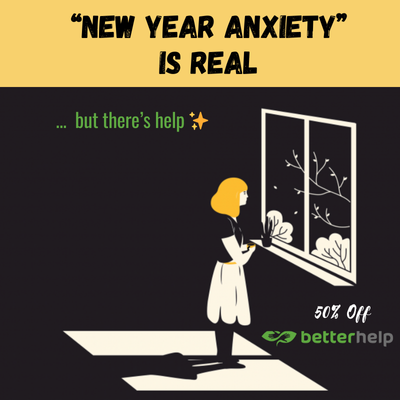View this post on Instagram
“Shame is internalized when one is abandoned. Abandonment is the precise term to describe how one loses one’s authentic self and ceases to exist psychologically.” ~John Bradshaw, Healing the Shame that Binds You.
~
Did you grow up the family hero?
The one who succeeded at all costs?
Maybe you were the athlete, or the scholastic genius, or the beautiful one.
Maybe you were the parentified child, who took on adult roles at way too young an age.
~
“I’ve never felt THAT kind of pleasure—with myself or any sexual partner.” Meet the ENIGMA™ Double Sonic Smart Vibrator (with app!). Treat yourself up to 50% off (code: ELEPHANT15)>>
~
Families, whether functional or dysfunctional, often assign children roles, such as the “Hero.” The problem with this role is that while the accolades keep coming, the ultimate fall is far.
The result is usually feelings of depression and an even deeper experience of shame. Don’t worry, addictions such as alcoholism and eating disorders will make you feel better—until they don’t, and the trap they bring is even more shame.
I know these traps intimately. As the “Family Hero” anything less than an “A” was not acceptable. But the pressures of maintaining these impossibly high standards takes a toll. For me, it was the addiction to food—as a comfort and as a way to punish.
Food is often a socially acceptable addiction, one which Sunny Sea Gold calls, “the good girl’s drug.”
~
“My vagina’s holy grail, seriously.” Bid farewell to a weak pelvic floor with this award-winning, ingenious device + a free bag of craft Arabica coffee >>
~
While I was fortunate that my college partying days ended with graduation, many people also turn to alcohol or drugs to soothe the pain of not measuring up. Whether it’s the sense of being a “failure,” or “less then,” or “not good enough,” these painful self-evaluations are rarely accurate.
What is Shame?
Brené Brown, a motivational speaker and author, defines shame as the intensely painful feeling or experience of believing that we are flawed, and therefore unworthy of love and belonging. Brown further associates shame with chronic feelings of disconnection. Shame, she says, arises due to the belief that “something we’ve experienced, done, or failed to do makes us unworthy of connection.”
While the foundations of shame can be overt, such as being shamed by a parent or authority figure for failing at something, they can also be covert.
I learned to watch my parents’ reactions when I’d bring home a paper that was less than an “A.” (Some of these never made it home.) When my father made a “joking” comment that a 97, “could have been higher,” I’d chuckle, but then turn to chocolate or other comforts to soothe the shame.
Shame causes us to lose our true self. Instead, we find ways to numb. But alcohol, food, and other drugs do not change the deeply held belief that one is a failure.
While I know my parents were doing their best, shame is not a way to motivate. To move on from shame, we need to heal childhood and adult wounds.
Steps to Healing Shame
Because shame is often buried deeply within, healing from it takes time—but it is possible.
The following can help unmask sources of shame and begin the healing process:
Externalize Shame
The first step in healing shame is to see that it is not about us. Our shame-based beliefs are false beliefs. Begin by asking which of these shame-based beliefs most resonates:
I’m a bad person.
I’m a failure/worthless.
I’ll never measure up.
I’m unlovable.
I’m damaged goods.
It’s all my fault.
Notice how global these beliefs are. Do you hold these beliefs about others? Chances are you do not have such all-encompassing beliefs about others. Even when you believe that another person’s actions are wrong, you likely don’t see them as damaged or bad. Separate the behaviors from yourself.
Ask Shame Why It’s Here
When shame is so pervasive, it’s hard to let it go.
When I began to question whether my lack of perfection and my eating disorder were that bad, I took the first step. Shame dialoguing is the process of talking directly to the part of you that holds shame.
Close your eyes and begin to connect with the part of you that holds shame. Does it live in a certain part of your body? How big is it? Does it have a shape? Are other emotions, such as anger, attached to it?
Now ask your shame why it’s hanging around.
Most times shame is actually there to protect you. You may hear a response such as, “If I weren’t here you’d drink again,” or “I’m here so you can be a better parent than your own,” or “I’m here so you don’t mess up again.”
Thank It
This may seem counterintuitive, but your shame has served its purpose. Thank it and assure it that you are okay now. It’s time to let you take over.
Breathe deeply and release the shame.
When you fully release shame, you will often feel as vulnerable as a newborn. That’s okay too.
In The Gifts of Imperfection, Brené Brown says, “shame loves secrecy.” That’s because secrecy only reinforces shame, reminding us of how unspeakable our actions are. It may allow some of the addictions we still have to remain unhealed.
It’s hard to share our stories, but it’s the final stage of healing. This is why 12-step programs encourage you to proudly proclaim your name and addiction.
Even if a 12- step program is not your path, fearlessly own your story and speak your truth.
Vulnerability is how we connect. These connections can remind us that we are far from shameful and that others share our stories too.
~









Read 4 comments and reply